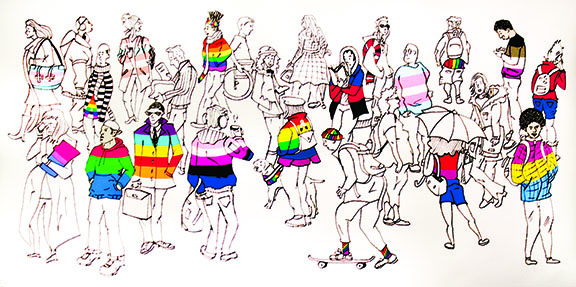While biological sex can be determined by chromosomes and hormones, gender extends past X and Y. Professors and Pride directors know this, as well as the people who identify outside the binary.
The difference between sex and gender is one that not many people fully understand. “Sex is biological- we use internal/external genitalia, chromosomes, and hormones to identify if someone is male, female, or intersex,” said Matthew S. Jeffries, director of the Gender Identity/Expression and Sexual Orientation Resource Center at WSU. “Gender is social construct based on characteristics expected of men and women.”
This means that people are free to identify as any gender (or no gender) regardless of biological sex. However, the gender that a person identifies as may not always be how they present themselves.

“Gender identity is how one describes and understands their own gender,” Jeffries said. “Gender expression is… how someone performs their gender. This expression can be in the terms of clothes, haircuts, jewelry, and other mannerisms.”
It is important to note that gender identity is completely separate from sexuality or sexual orientation. The people discussed in this article are not simply crossdressing or motivated by sexual reasons.

And there are certainly a lot more genders than male and female. These include nonbinary (neither male nor female), genderfluid (moving freely along the spectrum), gender nonconforming (not performing expectations of their gender), and more.
“So for coming out to myself, it was very slow. Like it wasn’t like ‘holy s— I’m nonbinary now’ it was more like adjusting to the thought process that I am not male,” said Jamie Brown, EWU student. “Coming out to people is okay, mostly because I only came out/come out to people who I know are accepting, but even then, it’s still a little bit nerve wracking.”
In recent years these identifications have become more accepted, more common, and more publicized in the US. Unfortunately, with any new group comes discrimination. Most gender nonconforming people face high levels of discrimination, much more than either women or men.
“Honestly, a lot of the discrimination comes from uneducation,” said Jamie, “I’ve also had discrimination because people believe that there’s only two genders or sexes, which is wrong scientifically. It’s just a lot of ignorance on the side of discrimination.”
Education about gender identity is not common, especially in schools. Articles such as this one can help to get information out. Workshops and public speakers can also be very useful in educating the public about such a hot topic.
Other ways to reduce discrimination would be better representation in the media. Very rarely are transgender or gender nonconforming people portrayed at all in film, music, or other types of media.

